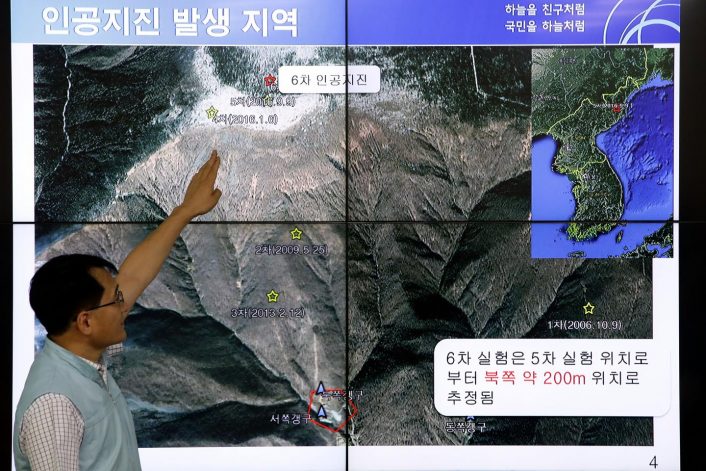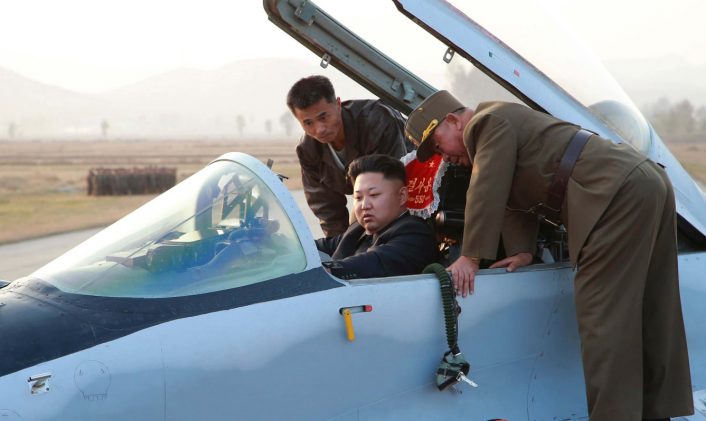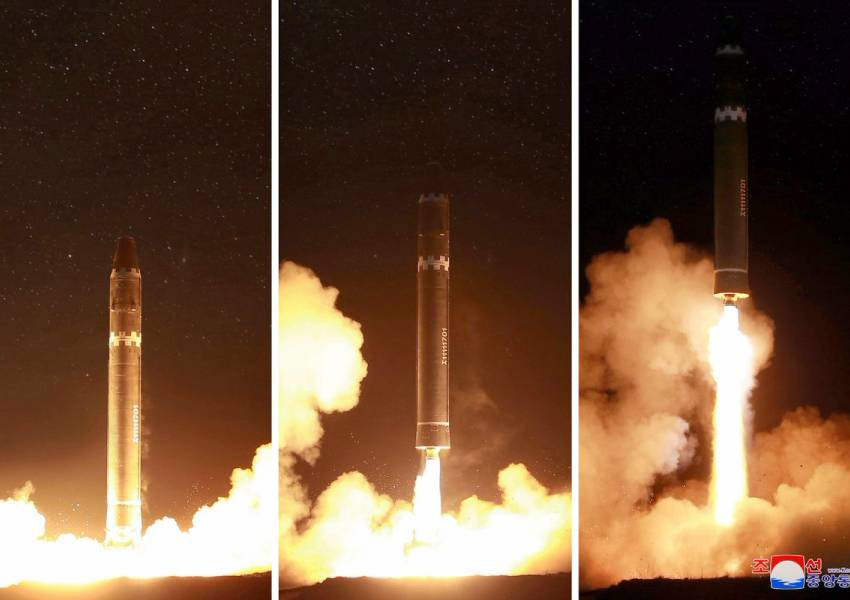Western Media Has Been Quiet About North Korea This Week, But North Korea Has Not Been Quiet And Prepares New Tests.
The Democratic People’s Republic of Korea (DPRK), or North Korea, populated headlines in the west and especially the United States for several weeks until recent, sensational domestic events replaced concerns over Pyongyang’s weapons programs and rhetorical threats. But the news from North Korea has become no less significant even though western media has momentarily shifted its attention away from the DPRK.
Orbital Launch of HS-15 ICBM Over Japan Possible.
The most recent intelligence gleaned from open sources suggests the DPRK may be preparing to launch its new HS-15 intercontinental ballistic missile (ICBM) two-stage missile to put a satellite into orbit soon. The Hwasong-15, or “HS-15”, was first confirmed flight-worthy on Nov. 29, 2017. During that test launch the missile flew a high trajectory flight profile reaching 4,475 kilometers in altitude and landing in the ocean 950 kilometers from its launch site off the Korean coast between Japan and Korea. This new suggestion of an orbital attempt is significant since, if an object were boosted into orbit atop an HS-15, it would overfly Japan and likely parts of the U.S. during its orbit. The potential payload for a possible orbital launch has not been revealed by North Korea or U.S. intelligence sources.

Anthrax on ICBM could reach U.S.
A media report released Wednesday, Dec. 20, 2017 revealed that North Korea was conducting testing on a biological weaponized anthrax warhead for its long-range ICBM program. The report follows the first successful test launch of North Korea’s new longest range intercontinental ballistic missile (ICBM), the Hwasong-15 on Nov. 29, 2017.
This development is significant since some western analysts diminished the significance of the successful Hwasong-15 long-range ICBM launch test by suggesting the missile could not carry a large enough warhead to significantly threaten the U.S. Analysts said that North Korea could not develop miniature nuclear warheads for Hwasong-15. If those analysts are correct the diminished threat of nuclear attack by long range ICBMs may now shift to include biological attack by ICBM.
The news of the tests was published in the Japanese Asahi newspaper and attributed to a secret South Korean intelligence source. “North Korea has started experiments such as heat and pressure equipment to prevent anthrax from dying even at a high temperature of over 7,000 degrees generated at the time of ICBM’s re-entry into the atmosphere,” the report said. “In part, there is unconfirmed information that it has already succeeded in such experiments.”
Last week, the White House echoed the Japanese reports when it released its U.S. National Security Strategy saying that North Korea is “pursuing chemical and biological weapons which could also be delivered by missile.”

North Korean Leadership Disappearances.
An examination of North Korean events suggests that the disappearance of top officials often pre-dates significant events in the country. Two top generals have disappeared in North Korea recently.
A high-ranking North Korean official named Park In Young was purged and executed following delays and now reported problems with North Korea’s nuclear weapons program. Mr. Young was reported to be director of North Korea’s Bureau 131, the part of the Central Committee that oversees the nuclear test facility and Punggye-ri, North Korea. Mr. Young also oversaw operations at the Sohae Satellite Lauching Station according to reports that originated from a recent North Korean defector.
Some reports suggest multiple catastrophic problems at North Korea’s nuclear test facilities, including landslides and earthquakes resulting from underground nuclear tests. One report cited “200 dead” in a landslide following an underground test.
A week before the reported disappearance of Park In Young another high-ranking North Korean military official, General Hwang Pyong-so, also disappeared. General Hwang Pyong-so was the Vice-Marshall of the Korean People’s Army. He also held a political post as Vice-Chairman of the State Affairs Commission.
Few news reports, official or otherwise, have reported on the specific locations or activities of the two high-ranking officials since their disappearances. A Dec. 17 report in Newsweek magazine said that Mr. Park In Young, the former nuclear boss, had been “executed”. Possibilities range from official sanction and banishment from government office to even punishment as severe as prison or execution.

Submarine Launched Missile Test Advances.
Satellite imagery from commercial intelligence gathering satellites has shown consistent activity at the Nampo Navy Shipyard in North Korea. Photos taken from orbit on Nov. 11, 16 and 24 and reported on the website 38 North show a second submersible ballistic missile test stand. The underwater stands are used to test submarine launched ballistic missiles.
Specifically, the two submerged barges are reported to support the testing and development of the Pukguksong-1 Submarine Launched Ballistic Missile (SLBM) as well as the new SINPO-Class ballistic missile submarine.
Accidental Engagement: The Greatest Threat.
Despite threatening rhetoric from both North Korea and the U.S. many analysts still suggest the most likely solution to the North Korean problem will be diplomatic. Considering the cost of life and the potential damage to the global economy most reasoning suggests neither the U.S. or North Korea has much to gain from initiating military aggressions.
Even with sensational saber-rattling both countries likely understand the cost of an armed conflict and the lack of strategic benefit from a war. However, with the U.S. and Japan both maintaining a high state of readiness and bolstering forces in the region and North Korea expands its test and development activity the chances of an accidental engagement at sea or in the air likely pose the greatest threat to further destabilizing the region and touching off a larger conflict. If forces in the region can maintain their readiness while avoiding an unintentional engagement the diplomatic solution may continue to develop against this volatile background.

Top image: The new long-range Hwasong-15 during its first November 29 launch test. (Photo: 38North)









